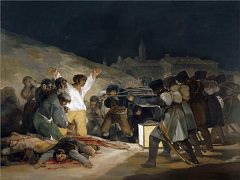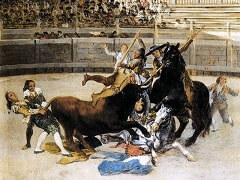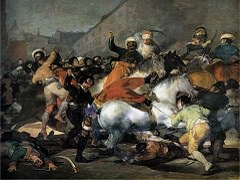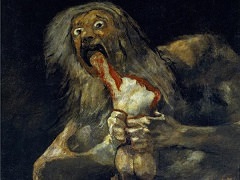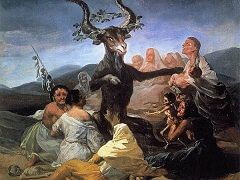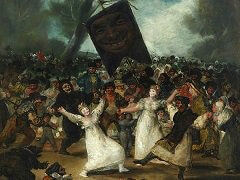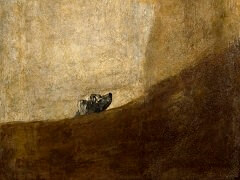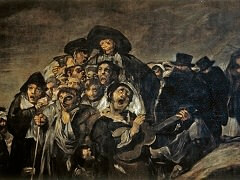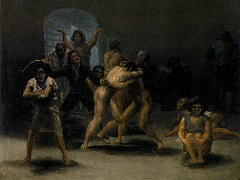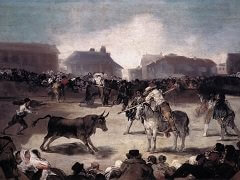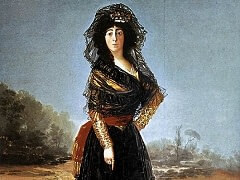The Pilgrimage to San Isidro, 1820-23 by Francisco Goya

The mural paintings that decorated the house known as "la Quinta del Sordo," where Goya lived have come to be known as the Black Paintings, because he used so many dark pigments and blacks in them, and also because of their somber subject matter. The private and intimate character of that house allowed the artist to express himself with great liberty. He painted directly on the walls in what must have been mixed technique, as chemical analysis reveals the use of oils in these works.
The Baron Émile d'Erlanger acquired "la Quinta" in 1873 and had the paintings transferred to canvas. The works suffered enormously in the process, losing a large amount of paint. Finally, the Baron donated these paintings to the State, and they were sent to the Prado Museum, where they have been on view since 1889.
In the ground-floor room of Goya's house, the present work occupied the wall across from Witches' Aquelarre. Brugada's description relates this "pilgrimage" with the Feast of San Isidro in Madrid, of which Goya painted a jolly sketch in his youth. The latter was called: The Meadow of San Isidro. Here, the artist uses the subject of the pilgrimage to express popular superstitions and ignorance.
The house where Goya lived was in a part of Madrid quite close to the hermitage of Saint Isidore. Here, the background landscape is desolate, but the country house at the right of the composition indicates that the scene took place near a small town or city. Several parts of this piece were repainted by Martínez Cubells, especially the faces of some figures.
Despite the multiple explanations offered by art historians, these works continue to be mysterious and enigmatic, yet they present many of the esthetic problems and moral considerations appearing in Goya's works.

